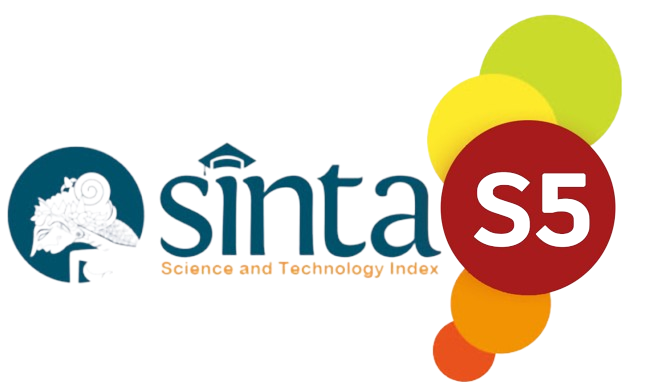LKPD Based on Phenomenon Based Learning (Phenobl) for Mastery of 21st Century Skills on the Material of Colligative Properties of Solutions for Class XII SMA/MA Equivalent
(1) Universitas Riau
(2) Universitas Riau
(3) Universitas Riau
(*) Corresponding Author
Abstract
Keywords
Full Text:
PDFReferences
Afriyanti, M., Suyatna, A., and Viyanti. (2021). Design of e-modules to stimulate HOTS on static fluid materials with the STEM approach. J. Phys. Conf. Ser., vol. 1788, No. 1, DOI: 10.1088/1742-6596/1788/1/012032
Aprilia, I. and I. G. P. Suryadarma, I. G. P. (2020). E-module of mangrove ecosystem (emme): Development, Validation, and Effectiveness in improving students’ self-regulation. Biosfer, vol. 13, no. 1, pp. 114–129, doi: 10.21009/biosferjpb.v13n1.114-129
Astra, I. M., Raihanati, R., and Mujayanah, N. (2020). Development of Electronic Module Using Creative Problem-Solving Model Equipped with HOTS Problems on The Kinetic Theory of Gases Material. J. Penelit. Pengemb. Pendidik. Fis., vol. 6, No. 2, PP. 181–194, doi: 10.21009/1.06205
Buchori, A. and Rahmawati, N. D. (2017). Achmad & Noviana. J. Pendidik. Dasar, vol. 1, No. 4, PP. 23–29
Direktorat Pembinaan SMA. (2017). Panduan Praktis Penyusunan E-Modul. Jakarta: KEMENDIKBUD.
Direktorat Sekolah Dasar. (2022). Buku Saku Serba-Serbi Kurikulum Merdeka Kekhasan Sekolah Dasar. PP. 1–51
Firdaus, M., Rusman, R., and Zulfadli, Z. (2022). Analysis of Students’ Learning Difficulties on the Concept of Buffer Solution Using Four-Tier Multiple Choice Diagnostic Test. Chim. Didact. Acta, vol. 9, no. 2, pp. 57–61, doi: 10.24815/jcd.v9i2.25099
Imansari, N. and Sunaryantiningsih, I. (2017). Pengaruh Penggunaan E-Modul Interaktif Terhadap Hasil Belajar Mahasiswa pada Materi Kesehatan dan Keselamatan Kerja. VOLT J. Ilm. Pendidik. Tek. Elektro, vol. 2, no. 1, p. 11, doi: 10.30870/volt.v2i1.1478
Ni’mah, A., and Kamaludin, A. (2023). Development of a Chemo-Entrepreneurship Practicum Video to Improve Material Understanding of Colligative Properties for Senior High School. Jurnal Penelit. Pendidik. IPA, Vol. 9, No. 2, pp. 666–675, doi: 10.29303/jppipa.v9i2.1512
Pradnyamita, M. I., Tika, L. N., and Sudiana, I. K. (2019) Pengembangan Lembar Kerja Siswa (Lks) Dengan Model Discovery Learning Pada Materi Sifat Koligatif Larutan. J. Pendidik. Kim. Undiksha, Vol. 3, No. 2, PP. 61, doi: 10.23887/jjpk.v3i2.21142
Prastowo, A. (2015). Panduan Kreatif Membuat Bahan Ajar Inovatif. Diva Press.
Riduwan. (2012). Dasar - Dasar Statistika. Bandung: Alfabeta.
Sugiyono. (2016). Statistika untuk Penelitian. Bandung: Alfabeta.
Sukmawati, W. (2019). Analisis Level Makroskopis, Mikroskopis dan Simbolik Mahasiswa dalam Memahami Elektrokimia Analysis of Macroscopic , Microscopic and Symbolic Levels of Students in Understanding Electrochemistry. Jurnal Inovasi Pendidik. IPA, vol. 5, no. 2, PP. 195–204
Wakil, K., Rahman, R., Hasan, D., Mahmood, P., and Jalal, T. (2019). Phenomenon-Based Learning for Teaching ICT Subject through Other Subjects in Primary Schools. Jurnal Comput. Educ. Res., vol. 7, no. 13, PP. 205–212, doi: 10.18009/jcer.553507
Weng, F., Ho, H. J., Yang, R. J., and Weng, C. H. (2019). The influence of learning style on learning attitude with multimedia teaching materials. Eurasia J. Math. Sci. Technol. Educ., vol. 15, no. 1, PP. 1–9, doi: 10.29333/ejmste/100389
Widyaningsih, R. (2014). Pengembangan Bahan Ajar Geografi Berbasis Penanggulangan Bencana melalui Pembelajaran Contextual Teaching and Learning (CTL) Di Kelas XI IPS SMA Negeri 1 Trawas. Swara Bhumi, Vol. 3, No. 2, PP. 1–7
DOI: https://doi.org/10.24952/lavoisier.v3i2.13073
Refbacks
- There are currently no refbacks.
Copyright (c) 2024 AINUL RAHMI

This work is licensed under a Creative Commons Attribution-ShareAlike 4.0 International License.







Lavoisier:Chemistry Education Journal is licensed under a Creative Commons Attribution-ShareAlike 4.0 International License. Copyright © 2022 Lavoisier: Chemistry Education Journal.All rights reserved.


